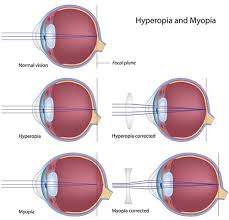Correction of Refractive Error: Adolescents’ Choice

Abstract:
Objectives:
To identify
methods of refractive error correction preferred by adolescents in the rural region
of India.
Materials
and Methods: A
quantitative cross-sectional, questionnaire-based study was conducted to investigate
the choices of refractive correction among teenagers in the junior college, rural
district of India. A purposive sampling was done to complete the required sample
size. Inclusion criteria for the study was considered as, students who enrolled
in the four majors of programme i.e., BiPC (biology, physics and chemistry), MPC(maths,
physics and chemistry), HEC (history, economics and civics), CEC(commerce, economics
and civics) and Vocational; including CS&E (computer science and Engineering)
and A&T(accountancy and taxation). Age ranged from 16-18 yrs. Exclusion criteria;
students who were over 18 yrs. were excluded from the study. A self-designed questionnaire
was used to obtain the data. Content validation and test-retest were conducted prior
to administration of the questionnaire.
Results:
Total N= 631
participants from four majors were included in the research. The results reveal
a 57% of the samples preferred spectacle lens to correct refractive error closely
followed by 41.5% of adolescents choosing contact lenses. Contraindication (46.1%)
was suggested as a hindrance to the use of contact lens while only 15.5% chose affordability
and (38.4%) listed as an occupation is the
key factor to not to use contact lenses for correcting refractive error. Most salient
features in the research are that more than half of the population considered eye
hospital as the healthcare facility to seek in case of inadequate vision.
Conclusion:
The study concludes
that there is a lack of awareness related to primary eye care among the said population,
emphasizing the role of eye care professionals in the public health sector.
Keyword: Preferences, Refractive Error, Adolescents,
Refractive Correction, and Methods.
References:
[1].Bourne,
R. R., Stevens, G. A., White, R. A., Smith, J. L., Flaxman, S. R., Price, H., ...
& Pesudovs, K. (2010). Causes of vision loss worldwide, 1990–2010: a systematic
analysis. Lancet Glob Health. 2013; 1 (6): e339–49. This meta-analysis describes
the prevalence and causes of visual impairment and blindness worldwide in various
world regions in.
[2].Dandona L, Dandona
R, Srinivas M, et al. Blindness in the Indian state of Andhra Pradesh. Invest Ophthalmol
Vis Sci 2001; 42:908e16.
[3].Dandona R, Dandona
L, Srinivas M, et al. Moderate visual impairment in India: the Andhra Pradesh Eye
Disease Study. Br J Ophthalmol 2002; 86:373e7.
[4].Holden BA, Fricke TR,
Ho SM, et al. Global vision impairment due to uncorrected presbyopia. Arch Ophthalmol
2008; 126:1731e9.
[5].Quora.com.
(2018). What's the meaning of MPC, BPC,
MBPC, CEC, HEC in the subjects of intermediate? - Quora. [online] Available
at: [Accessed 7 Jul. 2018]. https://www.quora.com/Whats-the-meaning-of-MPC-BPC-MBPC-CEC-HEC-in-the-subjects-of-intermediate
[6].Resnikoff S, Pascolini
D, Mariotti SP, et al. Global magnitude of visual impairment caused by uncorrected
refractive errors in 2004. Bull World Health Organ 2008; 86:63e70.
[7].Resnikoff,
S., Pascolini, D., Mariotti, S. P., & Pokharel, G. P. (2008). Global magnitude
of visual impairment caused by uncorrected refractive errors in 2004. Bulletin
of the World Health Organization, 86, 63-70.
[8].Taylor,
H. R. (2003). Eye care for the future: the Weisenfeld lecture. Investigative
ophthalmology & visual science, 44(4), 1413-1418.
[9].WHO. Elimination of
Avoidable Visual Disability Due to Refractive Errors, in WHO/PBL/00.79. Geneva:
World Health Organization, 2001.
[10]. Agarwal,
R., & Dhoble, P. (2013). Study of the knowledge, attitude, and practices of refractive error with emphasis
on spectacle usages in students of rural central India. journal of biomedical and pharmaceutical research, 2(3).

